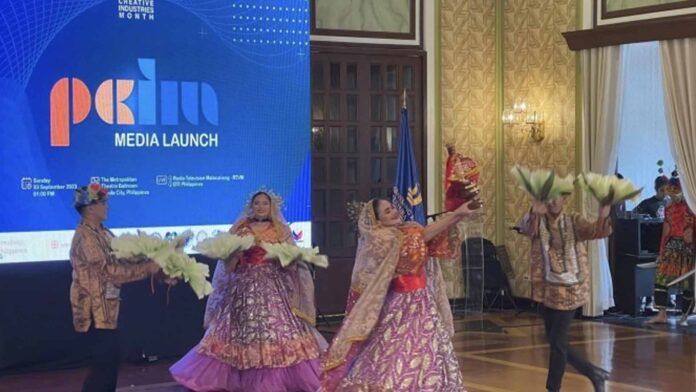The government is resolved to make the Philippines the No. 1 creative economy in ASEAN by 2030, a lawmaker said on Sunday.
“The goal is for the Philippines to be the number one creative economy in ASEAN by 2030. It’s now 2023, so we have seven years to do that,” said Pangasinan 4th District Rep. Christopher de Venecia during the Philippine Creative Industries Month media launch at Metropolitan Theater in Manila.
“Now we have a developmental framework in place because of the law. Now we just need the resources so that we can implement the different mandates of the law, so that we can come up and prime up our performance, especially in exports of our creative content,” he said, referring to Republic Act 11904 or the Philippine Creative Industries Development Act.
RA 11904 mandates the promotion and development of the country’s creative industries by protecting and strengthening the rights and capacities of creative firms, artists, artisans, creators, workers, indigenous cultural communities, content providers and other stakeholders in the creative industries.
Under the law, creative industries include audiovisual media (vlogs, films, television, animatronics, broadcasts, music); digital interactive media (software and mobile apps, video games, digitalized creative content); creative services (creative research, development, and real-time artistic performances); design (fashion, toy making, footwear making, textile development, urban landscaping, jewelry making); publishing and printed media (comics, blogs, magazines, published media); performing arts (musical theater, circus, opera, puppetry); visual arts (drawings, sculptors, paintings, photographs); traditional cultural expressions (arts and crafts, gastronomy); and cultural sites (museums, cultural exhibitions).
Data from the Philippine Statistics Authority showed that in 2022, the creative economy amounted to PHP1.60 trillion and contributed 7.3 percent to the country’s gross domestic product.
The industry currently employs more than seven million Filipinos.
De Venecia said the Philippines is number one in ASEAN in terms of exporting creative services.
“But our creative goods are sort of middling because of so many different problems. Of course, high power rates, a weak or struggling manufacturing base, we have logistics concerns,” he said.
“This creative industry law is an enabling mechanism for a whole of government approach to developing the sector and addressing the many different pain points that have been plaguing the different creative industry sectors for decades,” added de Venecia.
To spur the growth of the industry, de Venecia cited the need to amp up investment promotions and educate the country’s investment promotion agencies on the different opportunities that await investors when they come to the Philippines to support the creative ecosystem.
He added that the memorandum of understanding signed last year between the Philippines and Indonesia could also help the former’s creative industry to grow.
“This is something that we’re looking forward to materializing to see how we can encourage more cooperation not just within the bilateral relationship of Philippines and Indonesia but also how to mainstream creative economy in the ASEAN through creating a technical working group because this is really something that is an emerging economic sector within ASEAN,” said de Venecia.
The lawmaker said the government is working on increasing the budget for the Malikhaing Pinoy Program which aims to harness Filipino creativity as a key driver of economic growth and recovery through the development of a robust and all-inclusive creative ecosystem in the Philippines.
“Now we are in the process of deliberating the budget for 2024 and the initial allocation of the DBM to Malikhaing Pinoy is PHP50 million as opposed to last year’s zero,” he said.
“So for me that’s already a win, that our economic managers recognize the value that creative industries bring to the table. Of course, it’s now incumbent upon us in the lower house and the Senate to be able to raise the PHP50 million to at least at the same level or even higher,” de Venecia added. (PNA)






